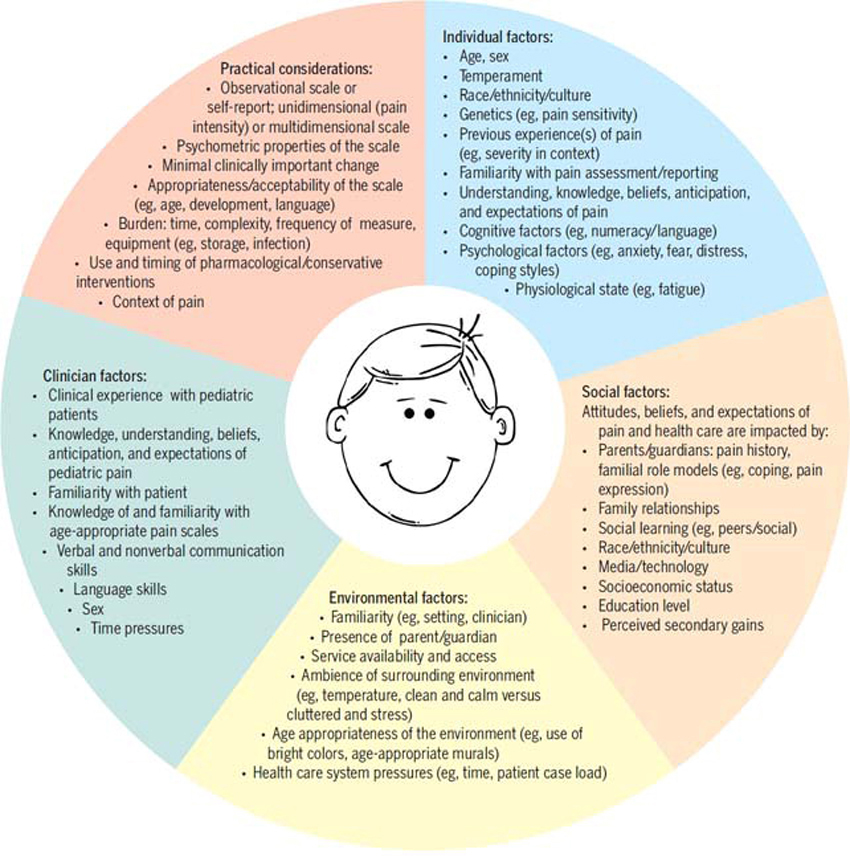High Prevalence of Daily and Multi-site pain — A Cross-sectional Population-based Study Among 3000 Danish Adolescents
SOURCE: BMC Pediatr. 2013 (Nov 19); 13: 191 ~ FULL TEXT
Michael S Rathleff, Ewa M Roos, Jens L Olesen, and Sten Rasmussen
HEALTH,
Aarhus University,
Vennelyst Boulevard 9,
8000 Aarhus C, Denmark.
misr@rn.dk
BACKGROUND: Daily pain and multi-site pain are both associated with reduction in work ability and health-related quality of life (HRQoL) among adults. However, no population-based studies have yet investigated the prevalence of daily and multi-site pain among adolescents and how these are associated with respondent characteristics. The purpose of this study was to investigate the prevalence of self-reported daily and multi-site pain among adolescents aged 12-19 years and associations of almost daily pain and multi-site pain with respondent characteristics (sex, age, body mass index, HRQoL and sports participation).
METHODS: A population-based cross-sectional study was conducted among 4,007 adolescents aged 12-19 years in Denmark. Adolescents answered an online questionnaire during physical education lessons. The questionnaire contained a mannequin divided into 12 regions on which the respondents indicated their current pain sites and pain frequency (rarely, monthly, weekly, more than once per week, almost daily pain), characteristics, sports participation and HRQoL measured by the EuroQoL 5D. Multivariate regression was used to calculate the odds ratio for the association between almost daily pain, multi-site pain and respondent characteristics.
RESULTS: The response rate was 73.7%. A total of 2,953 adolescents (62% females) answered the questionnaire. 33.3% reported multi-site pain (pain in > 1 region) while 19.8% reported almost daily pain. 61% reported current pain in at least one region with knee and back pain being the most common sites. Female sex (OR: 1.35-1.44) and a high level of sports participation (OR: 1.51-2.09) were associated with increased odds of having almost daily pain and multi-site pain. Better EQ-5D score was associated with decreased odds of having almost daily pain or multi-site pain (OR: 0.92-0.94).
CONCLUSION: In this population-based cohort of school-attending Danish adolescents, nearly two out of three reported current pain and, on average, one out of three reported pain in more than one body region. Female sex, and high level of sports participation were associated with increased odds of having almost daily pain and multi-site pain. The study highlights an important health issue that calls for investigations to improve our understanding of adolescent pain and our capacity to prevent and treat this condition.
From the Full-Text Article:
There are more articles like this @ our:
Background
Pain is not an uncommon experience among adolescents [1]. Risk factors for adolescent pain include physical factors such as being involved in work after school hours [2] and psychological factors [3]. The point prevalence of self-reported bodily pain was recently covered in a systematic review by King et al. [4]. They found that prevalence rates ranged substantially between the included studies with back pain ranging from 14–24%, musculoskeletal and lower limb pain from 4–40% and multi-site pain ranging from 4–49%. Pain prevalence rates were 2–3 times higher in females and increased with age for most pain types. Single studies have shown that the respondent characteristics of gender, age and health-related quality of life (HRQoL) are associated with the prevalence of pain [4]. These associations may, however, be confounded by body mass index (BMI) and sports participation, as high sports participation is associated with high prevalence of musculoskeletal pain [5]. Confounding may occur through the positive association between HRQoL and sports participation [6] and through the negative association between BMI and sports participation [7]. Therefore both these variables may be important confounders when investigating the association between respondent characteristics and pain.
Read the rest of this Full Text article now!






Leave A Comment